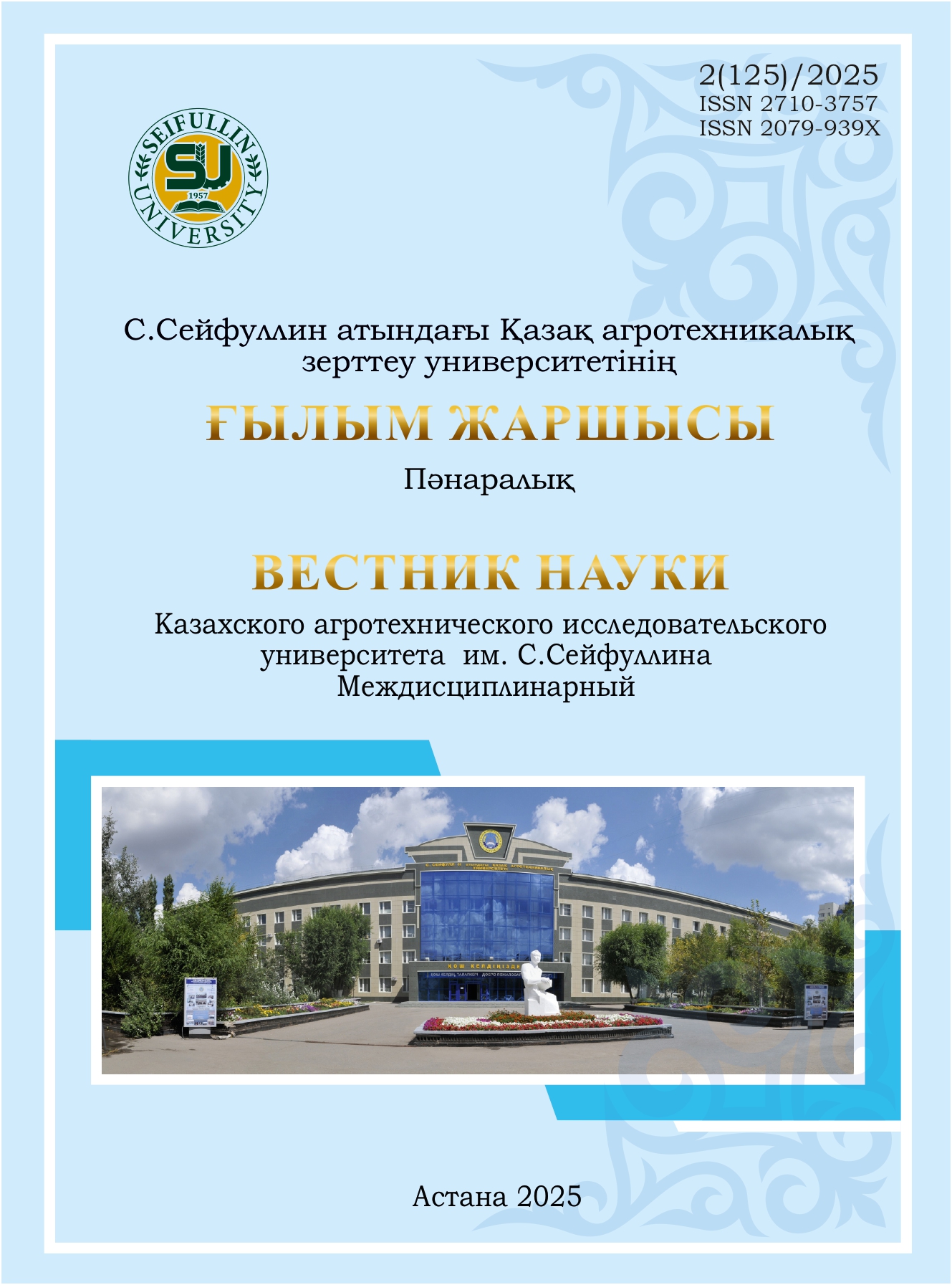Results of the study growth and development of goats of the mountain Altai downy breed, bred in the conditions of the north-east of Kazakhstan
DOI:
https://doi.org/10.51452/kazatu.2025.2(125).1884Keywords:
goats; exterior; live weight; gain; body measurements.Abstract
Background and Aim. The growth and development of goats, and the factors influencing these processes, are important determinants of production efficiency and the overall quality of goat-derived products. This research aimed to study the growth and development of Mountain Аltai downy goats considering gender and age groups on the «Agrofirma Akzhar-Ondiris» LLP farm in the Pavlodar region.
Materials and Methods. The study focused on Mountain Altai downy goats. Their growth and development indicators were assessed using standard animal husbandry methods. The research was conducted to study the growth and development of goats by visually assessing their exterior, taking basic measurements with a measuring tape and measuring stick, calculating body indices and weighing the goats on electronic scales to determine live weight, including average daily, absolute and relative weight gains.
Results. The farm has over 5855 goats, including 5.17% stud bucks and 55.1% does. Yearling does and bucks make up 3.26% and 18.8% of the population, respectively. The average live weight of 2-to 2.5-year-old does and bucks was 38.5 kg and 46.9 kg, respectively. Adult does averaged 47.3 kg and adult bucks averaged 72.1 kg. Exterior characteristics were determined visually, through measurements and by calculating body condition indices. According to the massiveness index, 2.5-year-old does had a value of 138.04%, while 4-year-old bucks had a value of 142.14%.
Conclusion. All studied growth and development indicators of the Mountain Altai downy goats were comparable to those of local Kazakh goats and met the breed standard. Therefore it was concluded that this goat breed is suitable for continued breeding on the «Agrofirma Akzhar-Ondiris» LLP farm in the Pavlodar region.

